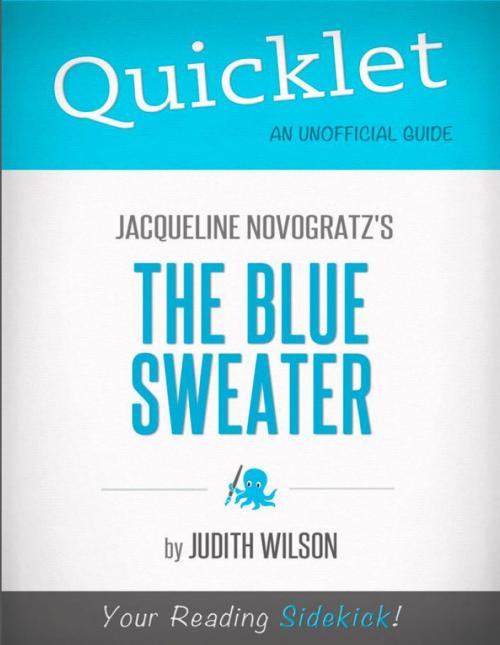Quicklet on Jacqueline Novogratz's The Blue Sweater (CliffsNotes-like Book Summary)
Nonfiction, Reference & Language, Study Aids, Book Notes, Art & Architecture, General Art| Author: | Judith Mary Wilson | ISBN: | 9781614648550 |
| Publisher: | Hyperink | Publication: | March 2, 2012 |
| Imprint: | Hyperink | Language: | English |
| Author: | Judith Mary Wilson |
| ISBN: | 9781614648550 |
| Publisher: | Hyperink |
| Publication: | March 2, 2012 |
| Imprint: | Hyperink |
| Language: | English |
ABOUT THE BOOK
Côte d’Ivoire in West Africa was an eye-opener for Jacqueline Novegratz, a young and idealistic American banker. Although only in her mid-20s when she arrived in Abidjan, the capital, in the 1980s, she had already had a successful career in international banking and was equipped with enthusiasm and a dream to change the world, but a certain naivete as well.
Her mission was to use her expertise to help woman in Côte d’Ivoire become self-sufficient, but she soon discovered that she was unwelcome, and recognized that she would never be effective there. She knew that it was time to move on, but she’d learned an important lesson—to help people, you must have their willing participation. She also learned the importance of listening to people if one is to really understand what they are trying to say.
The Blue Sweater is as much about learning as it is about Novogratz’s experiences. Early in her book, she writes about a favorite blue sweater that she gave to Goodwill after an embarrassing episode in high school (Acumen Fund: Jacqueline Shares her Blue Sweater Story). Years later, she spots a boy in Rwanda wearing her sweater with her name tag still inside, and so the sweater becomes her metaphor for bridging the gap between cultures and economic classes around the globe, many of which she has seen firsthand.
EXCERPT FROM THE BOOK
Among the successes was the Blue Bakery, which began as the project of a women’s group in Nyamirambo, a poor area of Kigali. When Novogratz first visited, two years after the founding of Duterimbere, she found 20 women in a small room, sitting in front of a counter with empty shelves behind it, waiting for business that never came. It had charitable support, but Novogratz convinced the women to drop the charity, with the promise that she would help them turn it into a profitable business. “I wanted to see for myself what it would take to make a business work in Rwanda,” she says.
Once again, Novogratz had more to learn—this time about cultural differences, such as the women’s inability to look people in the eye or speak to strangers—but over time, the little bakery expanded and flourished. “The story of the bakery was one of the human transformation that comes with being seen, being held accountable, succeeding,” Novogratz observes.
Despite the successes, Novogratz eventually decided that to be more effective she needed to learn about business systems so that she could apply them to her work, and so she applied to business schools in the United States. She was accepted at the Stanford Graduate School of Business at Stanford University in Palo Alto, CA, where she earned an MBA....
Buy a copy to keep reading!
ABOUT THE BOOK
Côte d’Ivoire in West Africa was an eye-opener for Jacqueline Novegratz, a young and idealistic American banker. Although only in her mid-20s when she arrived in Abidjan, the capital, in the 1980s, she had already had a successful career in international banking and was equipped with enthusiasm and a dream to change the world, but a certain naivete as well.
Her mission was to use her expertise to help woman in Côte d’Ivoire become self-sufficient, but she soon discovered that she was unwelcome, and recognized that she would never be effective there. She knew that it was time to move on, but she’d learned an important lesson—to help people, you must have their willing participation. She also learned the importance of listening to people if one is to really understand what they are trying to say.
The Blue Sweater is as much about learning as it is about Novogratz’s experiences. Early in her book, she writes about a favorite blue sweater that she gave to Goodwill after an embarrassing episode in high school (Acumen Fund: Jacqueline Shares her Blue Sweater Story). Years later, she spots a boy in Rwanda wearing her sweater with her name tag still inside, and so the sweater becomes her metaphor for bridging the gap between cultures and economic classes around the globe, many of which she has seen firsthand.
EXCERPT FROM THE BOOK
Among the successes was the Blue Bakery, which began as the project of a women’s group in Nyamirambo, a poor area of Kigali. When Novogratz first visited, two years after the founding of Duterimbere, she found 20 women in a small room, sitting in front of a counter with empty shelves behind it, waiting for business that never came. It had charitable support, but Novogratz convinced the women to drop the charity, with the promise that she would help them turn it into a profitable business. “I wanted to see for myself what it would take to make a business work in Rwanda,” she says.
Once again, Novogratz had more to learn—this time about cultural differences, such as the women’s inability to look people in the eye or speak to strangers—but over time, the little bakery expanded and flourished. “The story of the bakery was one of the human transformation that comes with being seen, being held accountable, succeeding,” Novogratz observes.
Despite the successes, Novogratz eventually decided that to be more effective she needed to learn about business systems so that she could apply them to her work, and so she applied to business schools in the United States. She was accepted at the Stanford Graduate School of Business at Stanford University in Palo Alto, CA, where she earned an MBA....
Buy a copy to keep reading!















